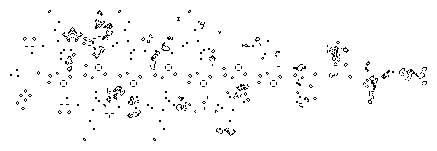John Horton Conway was a mathematician at Cambridge University (later at Princeton). He sought to simplify von Neumann's "universal constructor" based on cellular automata, but with fewer states and rules.
"... only after the rejection of many patterns, triangular and hexagonal lattices as well as square ones, and of many other laws of birth and death, including the introduction of two and even three sexes. Acres of squared paper were covered, and he and his admiring entourage of graduate students shuffled poker chips, foreign coins, cowrie shells, Go stones or whatever came to hand, until there was a viable balance between life and death."
J. J. O'Connor and E. F. Robertson, "John Horton Conway," http://www-groups.dcs.st-andrews.ac.uk/~history/Mathematicians/Conway.html

Conway had contributed previously to the "Mathematical Recreations" column in Scientific American, written by his friend Martin Gardner.
Published in Gardner's column as "The Fantastic Combinations of John Conway's New Solitaire Game 'Life'," Scientific American (1970): 120-23.
Conway's Prize Question: R. William Gosper (MIT) and computer Life (glider gun and puffer train) prove infinite expansion.
Early community-based game, developed and extended by programmers and players. Possibly the most-programmed computer game of all time. Especially popular with microcomputer enthusiasts: Byte magazine, Cromemco "Dazzler," many versions of game.



